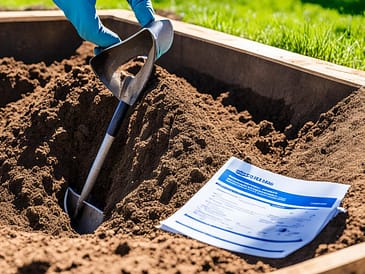Are you tired of dealing with costly septic tank maintenance and repair expenses? Are you looking for a way to take control of your septic system and save some hard-earned money? Look no further! In this comprehensive step-by-step guide, we will walk you through the process of DIYing your septic tank maintenance. Say goodbye to relying on expensive professional services and hello to a more self-sufficient and cost-effective solution.
From assessing the situation to troubleshooting common issues, we will provide you with all the necessary information and instructions you need to successfully maintain your septic tank. Whether you are a seasoned DIY enthusiast or someone who is new to tackling household projects, this guide is designed to be easily understandable and applicable by anyone. Get ready to roll up your sleeves, get a little dirty, and become the master of your own septic system.
Understanding Your Septic System
In order to successfully DIY your septic tank, it is imperative to have a deep understanding of how it functions. A septic system consists of three main components: the septic tank, the drainfield, and the soil beneath it. The septic tank is a watertight container that holds and treats household wastewater. It allows solids to settle at the bottom while allowing liquid effluent to flow into the drainfield.
The drainfield, also known as the leach field, is an underground area where effluent from the septic tank is distributed through a network of pipes. Here, natural processes purify and filter the wastewater before returning it to the groundwater system. The soil plays a vital role in this process by acting as a natural filter, removing harmful contaminants and pathogens from the effluent.
Understanding how these components work together enables you to identify potential issues and carry out appropriate maintenance procedures. Regular maintenance ensures that your septic system operates efficiently, preventing costly repairs and environmental contamination.
It’s important to note that different regions may have specific regulations regarding septic systems. Familiarize yourself with local guidelines and permits before undertaking any DIY projects on your septic tank.
Signs That Your Septic Tank Needs Attention
Proper maintenance of your septic tank is crucial to ensure its efficient and long-lasting operation. By being aware of the signs that indicate your septic tank needs attention, you can address issues promptly and prevent costly repairs or replacements. Here are some common indicators that it’s time to give your septic system some care:
1. Slow Draining Fixtures: If you notice slow drains in multiple fixtures, such as sinks, showers, or toilets, it could be a sign of a clogged or overflowing septic tank. This sluggishness indicates that wastewater is not properly flowing out of the tank and could be backing up into your home’s plumbing system.
2. Foul Odors: Persistent unpleasant smells around your property, especially near the drain field or areas close to the septic tank, should not be ignored. These odors can indicate a variety of issues, such as a full or leaking tank, blocked drainage pipes, or problems with the drain field. Addressing these concerns promptly will help avoid further damage and maintain a pleasant environment.
3. Lush Green Patches: While having a green lawn may seem desirable, if you notice unusually lush and vibrant patches around your drain field area even during dry periods, it could be an indication of excess moisture caused by a failing septic system. The leaking wastewater acts as fertilizer for the grass above it, resulting in healthier growth.
4. Gurgling Sounds: If you hear gurgling noises when flushing toilets or using other plumbing fixtures in your home, it may signify an issue with your septic system. These sounds occur when air gets trapped in the plumbing lines due to blockages or improper functioning of the septic tank. Prompt attention to this problem can prevent further damage and ensure the smooth operation of your septic system.
By paying close attention to these warning signs, you can take proactive measures to address septic tank issues before they escalate into major problems. Regular inspections, maintenance, and timely pumping of the tank can significantly extend its lifespan while ensuring a safe and efficient wastewater disposal system for your property.
Step 1: Assessing the Situation
Before embarking on any DIY project related to your septic tank, it is crucial to assess the current situation thoroughly. Start by observing any signs of trouble, such as slow drainage, foul odors, or wet areas in your yard. These indicators may be an indication of a full or malfunctioning septic tank.
Next, gather information about your septic system’s age, capacity, and maintenance history. This knowledge will allow you to better understand the potential issues and develop an appropriate course of action. Additionally, check local regulations and requirements regarding septic system maintenance to ensure compliance.
Once you have gathered all necessary information, it is time to perform a visual inspection around your property. Look out for any standing water near the drain field or unusual vegetation growth. These signs might suggest an overflowing or leaking septic tank that requires immediate attention.
Lastly, consider reaching out to professionals for assistance if you are unsure about assessing the situation yourself. Septic tank experts can provide valuable insights and guidance based on their experience and knowledge in handling various septic system problems.
Step 2: Gathering the Necessary Tools and Equipment
To embark on your septic tank DIY journey, it is crucial to gather the appropriate tools and equipment beforehand. Being well-prepared will help you complete the task efficiently, saving both time and effort.
1. Safety Gear: Before diving into any maintenance work, ensure your safety by donning essential protective gear. This includes sturdy gloves, safety goggles, and a face mask to shield yourself from potential hazards like harmful gases or chemical exposure.
2. Pumping Equipment: Septic tank maintenance often involves pumping out accumulated solids and sludge. To carry out this task effectively, you will require a reliable submersible pump or a vacuum truck suitable for septic systems. Ensure that you have the necessary hoses and fittings as well.
3. Inspection Tools: In order to assess the condition of your septic tank accurately, a few inspection tools are indispensable. A flashlight with good battery life will help illuminate dark areas within the tank during inspections. Additionally, a probe or long-handled shovel is useful for locating access points or probing solids build-up at different levels.
4. Cleaning Supplies: Proper cleaning materials are essential to maintain hygiene while working on your septic system. Stock up on high-quality disinfectants or environmentally-friendly cleaning solutions to minimize bacterial growth and unpleasant odors both during and after maintenance tasks.
Gathering these tools not only ensures that you are fully equipped for any situation but also instills confidence in tackling your septic system DIY project successfully!
Step 3: Locating Your Septic Tank and Access Points
Locating your septic tank and access points is a crucial step in DIY septic tank maintenance. By knowing the exact location of your septic system, you can effectively carry out routine inspections, cleanings, and necessary repairs without any hassle. Here’s how you can accomplish this task with ease:
1. Obtain a Copy of Your Property Map: Start by obtaining a copy of your property map from local authorities or your municipality’s building department. This will provide you with important information about the layout and precise dimensions of your septic system.
2. Check for Visible Signs: Look for any visible signs above ground that indicate the presence of your septic tank. These signs may include grass that is greener or thicker than surrounding areas, depressions in the ground, or strange odors lingering in specific spots.
3. Follow Sewer Lines: If possible, follow the sewer lines from your house to determine their general direction and locate potential access points along the way. Often, these lines lead directly to the septic tank.
4. Use a Metal Probe: In case you are unable to find any visible signs or sewer lines, using a metal probe can be an effective method to locate your septic tank underground. Insert the probe into the ground at various spots around your property until you encounter resistance indicating the presence of a solid structure beneath.
Finding your septic tank and access points may require some effort but remember that knowledge is power when it comes to maintaining this vital component of your home’s wastewater management system.
Step 4: Preparing the Area for DIY Maintenance
The key to successfully performing DIY maintenance on your septic tank lies in proper preparation. By taking the time to prepare the area before diving into the task, you can ensure a smooth and efficient process. Here are some essential steps to follow when preparing the area for your septic tank maintenance:
1. Clearing the Surrounding Area: Before you begin any work on your septic tank, it is crucial to clear away any debris, vegetation, or obstructions in the immediate vicinity. This will provide ample space for you to work comfortably and minimize any potential hazards.
2. Ensuring Proper Ventilation: As you engage in septic tank maintenance activities, it is important to have proper ventilation in place. Open windows or use fans to ensure a constant flow of fresh air throughout the area. This will not only prevent unpleasant odors from overwhelming you but also promote a healthier work environment.
3. Assembling Safety Gear: Don’t forget to gather all necessary safety gear before starting any maintenance task on your septic system. This may include gloves, goggles, masks, and protective clothing. Wearing adequate safety gear will shield you from potential health risks and keep accidents at bay.
4. Taking Necessary Precautions: It is crucial to turn off power sources nearby that could pose a safety risk during maintenance activities. For instance, if there are electrical outlets or switches nearby, switch them off before proceeding further with your DIY tasks.
Step 5: Pumping and Cleaning Your Septic Tank
Once you have gathered the necessary tools and equipment, located your septic tank, and prepared the area for maintenance, it is time to dive into the crucial task of pumping and cleaning your septic tank. Regular pumping is essential to maintain a healthy septic system. It helps prevent blockages, reduces the risk of backups and odors, and extends the lifespan of your tank.
To begin this process, carefully remove the lid or access point to your septic tank. This may require some physical effort or assistance from a partner. Remember to handle these heavy objects with caution to avoid any injuries. Once you have gained access to the tank, use a reliable submersible pump or vacuum truck specifically designed for septic systems.
You will need to locate the inlet and outlet baffles inside your septic tank. These components play a critical role in separating solids from liquids and ensuring proper flow. Inspect them carefully for any signs of damage or clogs that might impede their functionality. If needed, clean these baffles using water pressure or specialized tools recommended by experts.
Next comes the actual pumping process. Attach the pump’s hose securely to an appropriate outlet on your septic system. As you initiate pumping, pay close attention to avoid overloading your system with too much wastewater at once. Maintain a steady flow until you have removed all accumulated sludge and scum from your tank.
Step 6: Inspecting and Maintaining the Components
Inspecting and maintaining the components of your septic tank is essential to ensure its proper functioning and longevity. By regularly checking these components, you can prevent potential issues from escalating into costly repairs or replacements. Let’s explore the key components you need to pay attention to:
The Inlet and Outlet Pipes
The inlet and outlet pipes are responsible for directing wastewater into and out of your septic tank. Regularly inspect these pipes for any signs of blockages, leaks, or damage. By ensuring these pipes are clear of debris or obstructions, you can maintain a smooth flow of wastewater and minimize the risk of backups or drainage problems.
Moreover, it’s important to check for any cracks or corrosion along the pipes’ surface. Any damage should be promptly repaired to prevent sewage leakage that may contaminate your surroundings. Remember, addressing minor issues early can save you from major headaches down the line.
The Baffles
Baffles are crucial elements within your septic tank that help separate solids from liquids and prevent them from flowing out through the outlet pipe. Over time, these baffles may become clogged with sludge or develop structural issues due to corrosion.
Regularly inspecting baffles ensures they remain intact and functional. If you notice any signs of deterioration or blockage, consider replacing them with new ones. This simple maintenance step will optimize your septic system’s performance and prevent solids from exiting the tank prematurely.
The Drainfield
The drainfield is an integral part of your septic system that disperses treated effluent into the soil for natural filtration. Inspecting this area is vital in identifying potential problems before they cause significant damage.
During the inspection, pay close attention to the soil’s condition. Excessively wet or soggy areas may indicate drainfield saturation or clogging. Additionally, inspect the vegetation above the drainfield—healthy grass and plants indicate proper functioning, while patchy or dying vegetation may suggest underlying issues.
By regularly monitoring and maintaining these septic components, you can ensure that your system continues to operate efficiently, preventing major disruptions and protecting both your property and the environment.
Troubleshooting Common Septic Tank Issues
Dealing with septic tank issues can be a daunting task, but with the right knowledge and approach, you can troubleshoot and resolve many common problems on your own. Here are some key issues you might encounter and steps to address them:
Clogged Drainage Pipes
A clogged drainage pipe is one of the most common issues homeowners face with their septic systems. This can cause backups, slow drainage, and unpleasant odors. To address this problem, start by using a sewer snake or auger to clear any blockages in the pipes. Follow up by flushing hot water through the system to remove any residual debris.
If the clog persists, it may be necessary to use a chemical drain cleaner specifically designed for septic systems. However, exercise caution when using these products as they can be harsh on the environment and may disrupt the healthy bacteria in your septic tank.
Odor Problems
Foul odors emanating from your septic system can be both unpleasant and embarrassing. The first step is identifying the source of the odor. Check for leaks or cracks in the tank or pipes that could be allowing sewage gases to escape.
If there are no visible issues, consider using an environmentally friendly odor eliminator designed for septic systems. These products contain natural enzymes that neutralize odors without harming the delicate balance of bacteria in your tank.
Sewer Backups
A sewer backup is a serious problem that requires immediate attention. If you notice water or waste coming up through drains or toilets in your home, it’s crucial to act fast to prevent further damage.
The first step is locating your main sewer cleanout access point, typically found near the house or in the basement. Carefully remove the cap and use a sewer snake to clear any blockages. If this doesn’t resolve the issue, it’s advisable to call a professional septic service provider who can diagnose and fix the problem.
Septic Tank Alarm Activation
If your septic tank is equipped with an alarm, its activation indicates that something is wrong with your system. The alarm may signal an issue such as high water levels, pump failure, or electrical problems. Start by checking if there are any visible signs of malfunction.
If you can’t identify the problem visually, consult your septic system manual or contact a professional for guidance. Remember that regular maintenance and inspection can help prevent such situations from arising in the first place.
Step 8: Reassembling and Restoring Your Septic System
After diligently completing the previous steps of assessing, cleaning, inspecting, troubleshooting, and maintaining your septic tank, it is now time to focus on reassembling and restoring this crucial component of your home’s waste management system.
The first task in this step involves carefully putting the components back together. Start by securely fastening the access lids or covers to ensure they are airtight. This will prevent any unwanted odors or gases from escaping and maintain optimal functionality. Take extra care to tighten all connections and fittings to avoid leaks.
Next, restore the area surrounding your septic tank to its original condition. Fill any holes or trenches that were dug during the inspection or maintenance process. Restore vegetation that may have been temporarily removed and replant grass over disturbed areas. Remember to use native species that are well-suited for your climate, as they will require less water and maintenance.
To ensure long-term efficiency of your septic system, implement preventive measures such as regular pumping schedules and proper waste disposal practices. Avoid flushing non-biodegradable items down the toilet or drains as they can clog pipes and damage the system. Educate yourself and your family members about what can safely be disposed of in sinks or toilets.
Conclusion
In conclusion, learning how to DIY your septic tank can be a rewarding and empowering experience. By following the step-by-step guide provided, you can effectively maintain and troubleshoot your septic system, ensuring its optimal functionality for years to come. Remember, taking care of your septic tank not only saves you money on costly repairs but also contributes to environmental preservation. So, embrace the challenge and become a confident steward of your own septic system – a task that is both practical and environmentally conscientious.




